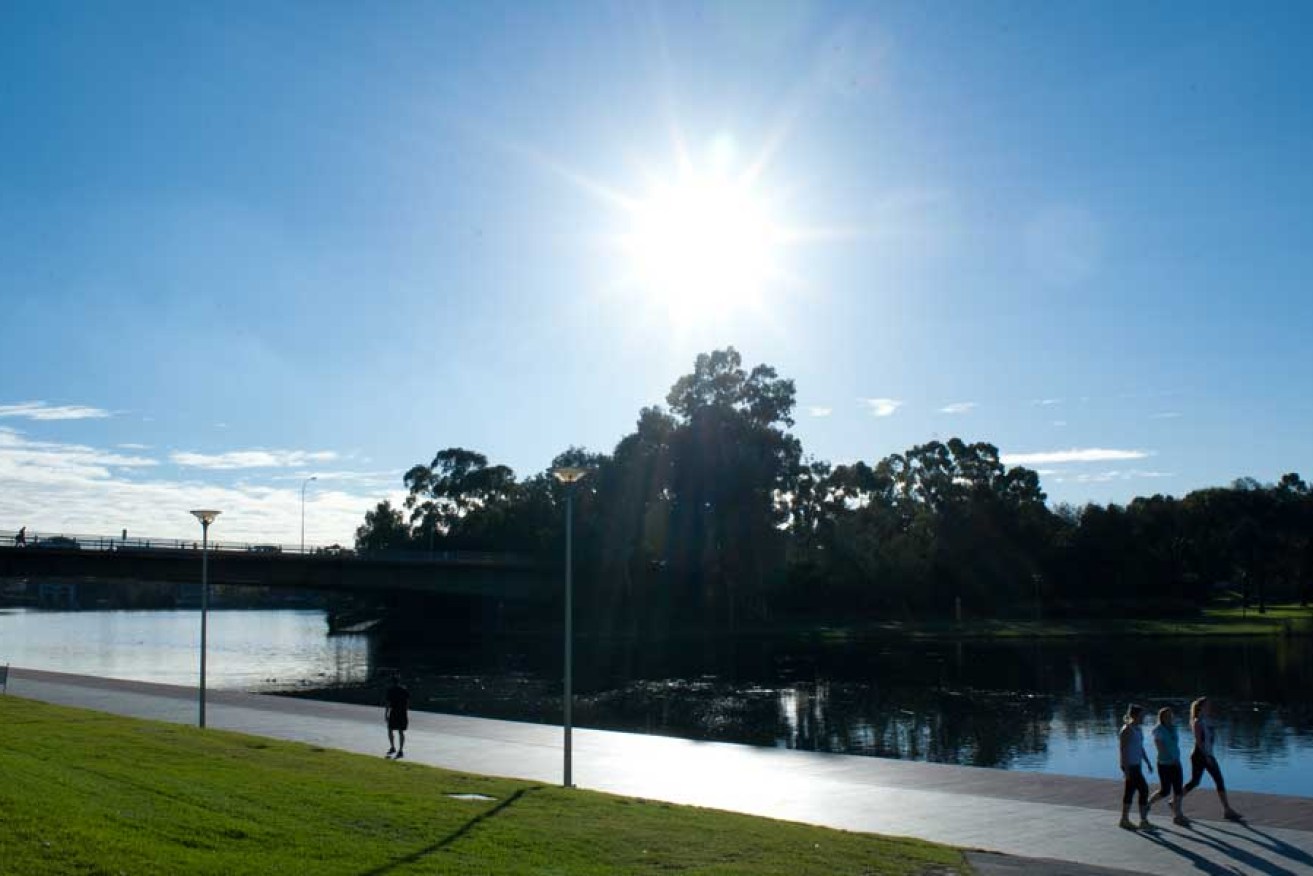Richardson: Labor’s search for meaning

The sun sinking into the west over the River Torrens. Photo: Nat Rogers/InDaily
Labor’s greatest challenge as it prepares to battle for an unlikely fourth term is not merely one of understanding its purpose but of convincing voters that it still has one.
As far as the political news cycle is concerned, any given day this year can be pencilled in as either a child protection crisis or a Holden crisis. If there happens to be a gap in that withering schedule, it will be filled with an Adelaide Oval milestone, either met or missed.
The relentless pace and ferocity of emerging controversies and scandals that have amounted to variations on this inevitable theme have suffocated the Weatherill Government; its media diary reads like George Orwell’s dystopian metaphoric glimpse of the future, like a boot stamping on a human face forever. Almost every day, it is kicked and clobbered by revelations of historic failures or tenuous futures.
In the face of all this, the Premier’s recent efforts to recapture political momentum have resembled a waterlogged sailor trying to single-handedly right a ship sinking in stormy seas. While distant visions of dizzying transport networks and merging hospitals in the city’s west have briefly cut through the maelstrom, they amounted to little more than an alluring glimpse of sunlight through the squall. Labor will be disappointed the respite was so fleeting, but it is a disappointment of its own making.
There was never any serious effort to present these policy visions as anything more than a one or two day media hit, rather than as the foundation for a serious claim to four more years in power.
The SA Labor Party is a curious dichotomy compared to the party nationally. Federally, Labor has been in power for only 22 years in the 64 since Chifley lost power. That’s compared to 34 years in SA in the 48 years since the last Playford administration. In modern state history, Labor has become the natural party of Government. While nationally the party doomed itself to a generation in Opposition with the DLP split, locally it was the Liberals that were rent in twain, with the Liberal Movement and its associated spats that continue to divide sections of the parliamentary party even now.
Remarkably perhaps, SA Labor never lost the desperation for power nor the organisational capacity to achieve it. What it has sometimes failed to fully appreciate is what to do with it once seized.
Perhaps it is by dint of the shortcomings of the three-tier system – ideological zeal can quickly become a redundant quality when the loftiest of your tasks is to try and not overspend the cash doled out to you by those pulling the economic levers. And as popular as it may be, there is little in the way of old Labor values in spending half a billion dollars on an inner-city sports stadium.
Too afraid of its past to stand on its record and too wary of the future to commit to doing anything new within the forward estimates, the party is still searching for its next big project.
In the brief lull before the next wave pounds the flailing ALP ship, the party might do well to pause and consider its purpose in Government.
Because if it is merely to govern for its own sake, to seek and claim re-election, the party could do a lot worse than to lose the March poll. It ditched Mike Rann not because of any ideological disagreement, but because factional hardheads no longer believed he could win. They then installed Jay Weatherill not because they admired his unreformed leftist zeal, but because they believed he could. There were distinct parallels with the infamous New South Wales ALP, which managed to wring one more win out of a purposeless administration by installing a relative cleanskin in Morris Iemma, then replaced him with left-winger Nathan Rees who quickly fell foul of the right faction for crossing the likes of Eddie Obeid, Joe Tripodi and Ian McDonald.
NSW Labor’s 2007 win probably doomed it to a generation of Opposition, as the state’s economy continued to flail and the factional blood and guts spilled out.
If Weatherill fulfils his function of winning Labor another term in SA, he will govern at the whim of the dominant right faction. But govern to what end? What is the case the ALP is pushing to justify its re-election? True to form, when it realised it wasn’t making a cogent argument to the electorate, it hired a new spin doctor (or more accurately, re-hired an old one).
Old British leftie and prolific diarist Tony Benn once observed that being in Government one loses the circumspection to really think about politics. Not the day-to-day tasks, nor the electorate responsibilities, but the broader ideological underpinnings that drove you to enter it in the first place. Doubtless it’s even tougher to ruminate in the midst of a modern media storm.
But after more than a decade, Labor appears to be struggling for a purpose in power. It’s certainly struggling to articulate one, which suggests it doesn’t have a clear idea itself. In the past, Labor’s branded itself a competent economic manager, an advocate for health and education, a creator of jobs; none of these will resonate truly this time round.
Too afraid of its past to stand on its record and too wary of the future to commit to doing anything new within the forward estimates, the party is still searching for its next big project. Which may well be finding a way back into Government from Opposition, and a reason to be there.
Tom Richardson is InDaily’s political commentator and Channel 9’s political reporter.




